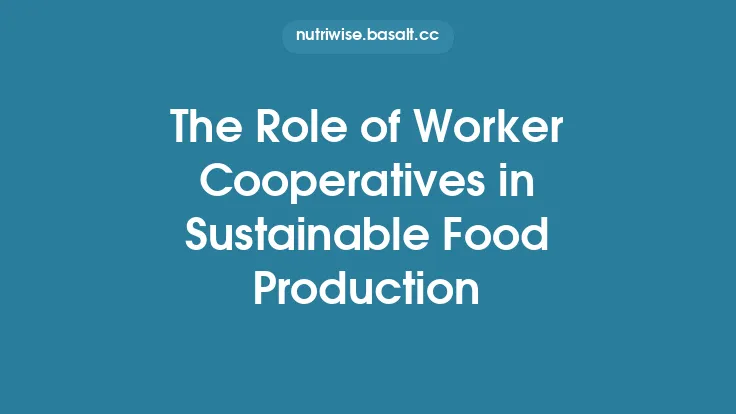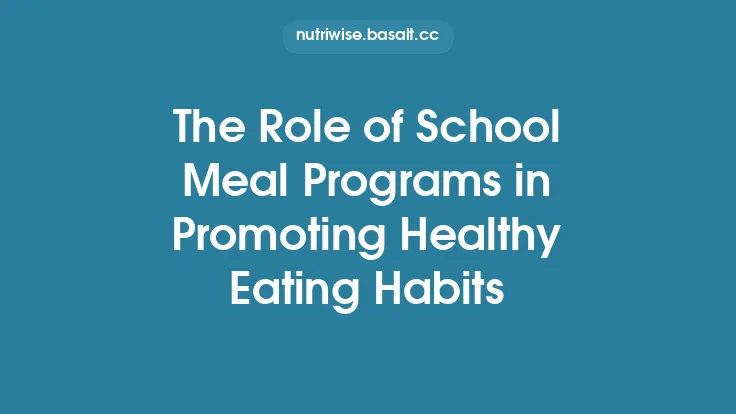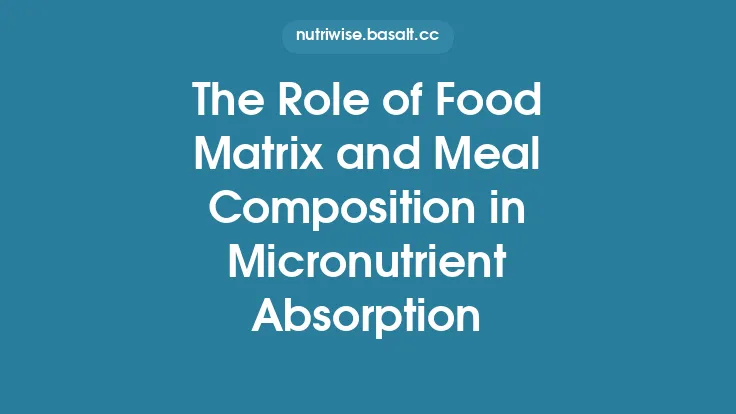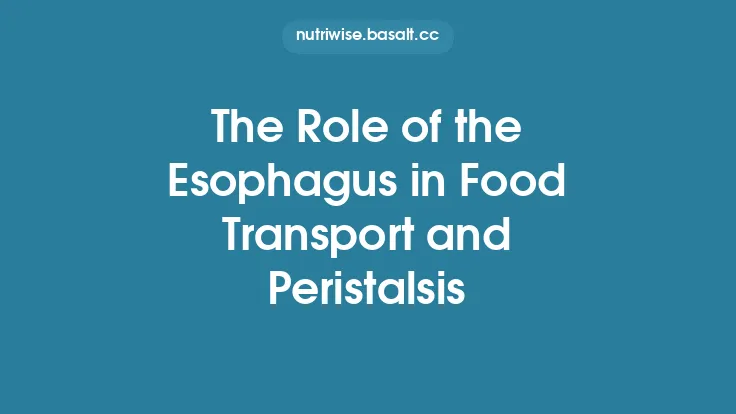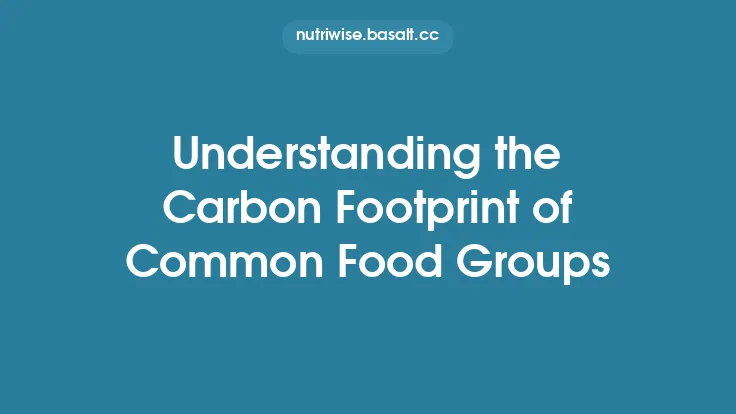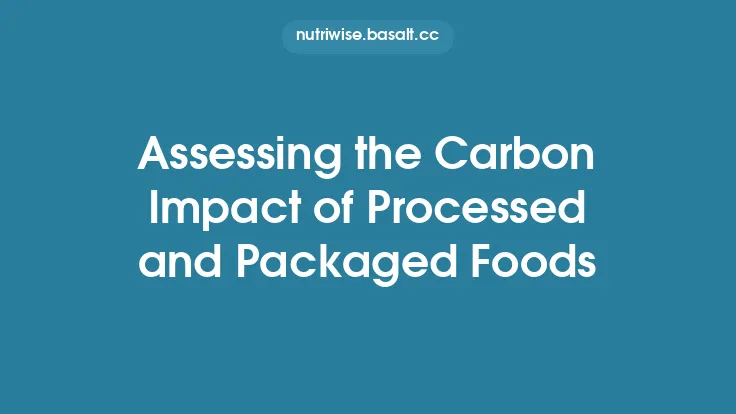Food transportation is a critical, yet often overlooked, component of the overall carbon footprint of what ends up on our plates. While production, processing, and cooking each contribute their share of greenhouse‑gas (GHG) emissions, the journey from farm or factory to the consumer can account for a substantial portion—sometimes up to 30 % of the total emissions for certain commodities. Understanding how and why food moves, the energy it consumes along the way, and what can be done to make those journeys cleaner is essential for anyone interested in truly sustainable eating.
Understanding Food Transportation Emissions
The carbon impact of moving food is driven by three primary factors:
- Mode of transport – Trucks, ships, trains, and aircraft each have distinct emission intensities measured in grams of CO₂‑equivalent per tonne‑kilometre (g CO₂e / t·km).
- Distance traveled – Longer hauls naturally generate more emissions, but the relationship is not linear because of load factors, back‑hauling opportunities, and multimodal routing.
- Load characteristics – Weight, volume, and the need for temperature control (the “cold chain”) affect fuel consumption per unit of cargo.
When these variables are combined, the resulting figure—often expressed as “food‑miles” (the total distance a product travels)—provides a useful, though simplified, proxy for transportation‑related emissions. More sophisticated life‑cycle assessment (LCA) models incorporate additional parameters such as vehicle age, fuel type, road grade, and idling time to generate a more accurate carbon accounting.
Modes of Transport and Their Carbon Intensity
| Transport Mode | Typical Emission Factor (g CO₂e / t·km) | Typical Use Cases |
|---|---|---|
| Maritime (container ship) | 10–40 | Bulk commodities (grains, soy, meat), long‑distance imports |
| Rail (diesel‑powered) | 20–30 | Inland distribution of bulk goods, especially in North America and Europe |
| Heavy‑duty truck (diesel) | 60–150 | Regional “last‑mile” delivery, perishable items |
| Air freight | 500–1,200 | High‑value, time‑sensitive produce (berries, exotic fruits) and emergency shipments |
*Values are averages; actual emissions vary with load factor, vehicle efficiency, and fuel composition.*
Key take‑aways
- Ships are the most carbon‑efficient for large volumes over long distances, but they require ports and often a secondary mode (truck or rail) for inland distribution.
- Rail offers a middle ground, especially where electrified lines are available, reducing reliance on diesel.
- Trucks dominate the final leg, and because they operate at lower load factors and often travel on congested roads, they contribute disproportionately to total emissions.
- Air freight is the carbon “worst‑case” scenario, typically reserved for niche markets where speed outweighs environmental cost.
Distance, Distribution Networks, and the “Food Miles” Concept
The popular “food‑miles” metric can be misleading if used in isolation. A tomato shipped 500 km by sea in a fully loaded container may emit far less CO₂ than a locally grown lettuce transported 20 km by a refrigerated truck that runs half‑empty. To put this into perspective:
- Sea‑borne tomatoes (500 km, 30 g CO₂e / t·km) → 15 kg CO₂e per tonne.
- Refrigerated truck lettuce (20 km, 120 g CO₂e / t·km, 50 % load factor) → 12 kg CO₂e per tonne.
Thus, load factor and mode efficiency matter more than raw distance. Modern distribution networks attempt to minimize empty back‑hauls by pairing inbound and outbound cargo, using cross‑docking facilities, and employing “hub‑and‑spoke” models where a central warehouse consolidates shipments before regional delivery.
Cold Chain Requirements and Energy Use
Perishable foods—dairy, meat, seafood, fresh produce—often require temperature‑controlled transport. The cold chain adds two layers of energy demand:
- Refrigeration equipment on trucks, ships, and storage facilities, typically powered by diesel generators or electricity derived from the grid.
- Insulation and packaging that increase vehicle weight, raising fuel consumption.
A refrigerated truck can consume 30–50 % more fuel than an equivalent uncooled vehicle. For example, a 20‑tonne refrigerated truck traveling 200 km may emit roughly 180 kg CO₂e, compared with 120 kg CO₂e for a dry‑goods truck on the same route.
Mitigation strategies include:
- Improved insulation (e.g., vacuum‑insulated panels) that reduces the power needed for refrigeration.
- Alternative refrigerants with lower Global Warming Potential (GWP) than traditional HFCs.
- Electrified or hybrid trucks that can power refrigeration units from onboard batteries, especially on short‑haul routes.
Logistics Optimization and Route Planning
Advanced logistics software now leverages real‑time traffic data, predictive analytics, and machine‑learning algorithms to:
- Consolidate shipments so that trucks operate near full capacity.
- Select the most carbon‑efficient route, balancing distance, road grade, and congestion.
- Schedule deliveries during off‑peak hours, reducing idling and stop‑and‑go fuel waste.
A case study from a European dairy cooperative showed that implementing a dynamic routing platform reduced average truck mileage by 12 % and cut transportation‑related CO₂ emissions by 9 % within one year, without affecting delivery times.
Impact of Packaging on Transportation Emissions
Packaging serves both protective and marketing functions, but it also influences transport emissions in two ways:
- Weight – Heavier packaging (e.g., glass jars, thick cardboard) adds to the cargo mass, increasing fuel consumption per kilometre.
- Volume – Bulky packaging reduces the number of units that can fit in a container, lowering load factor.
Switching from glass to lightweight PET for certain beverages can reduce per‑unit transport emissions by 5–10 %, simply because more product fits in the same space and the overall weight is lower. However, any packaging change must be evaluated holistically, considering end‑of‑life recyclability and the carbon cost of producing the alternative material.
Policy and Industry Initiatives to Reduce Transport Emissions
Governments and industry groups are increasingly targeting food‑transport emissions through a mix of regulation, incentives, and voluntary standards:
- Carbon pricing on freight fuels (e.g., EU’s Emissions Trading System) encourages shippers to select lower‑emission modes.
- Fuel‑efficiency standards for heavy‑duty trucks (e.g., U.S. EPA’s SmartWay program) set minimum miles‑per‑gallon thresholds.
- Low‑Carbon Labels (e.g., Carbon Trust’s “Carbon Neutral” certification) now include transportation footprints, prompting producers to disclose and improve logistics.
- Investment in rail electrification and hydrogen‑fuel‑cell trucks aims to replace diesel‑heavy routes with zero‑emission alternatives.
Collectively, these measures are projected to cut food‑transport GHG emissions by 15–20 % globally by 2035, assuming continued technological adoption and policy enforcement.
Consumer Choices and Local Sourcing
While systemic changes are essential, individual purchasing decisions can also shift the transportation balance:
- Prioritize regionally produced foods when they are available in season, especially those that do not require long‑haul refrigeration.
- Support bulk purchasing (e.g., buying a larger bag of beans) to reduce packaging weight and increase load efficiency.
- Choose products with transparent supply‑chain information, such as QR codes that reveal distance traveled and mode of transport.
Even modest shifts—like swapping an imported exotic fruit for a locally grown alternative a few times per month—can cumulatively reduce a household’s food‑transport carbon footprint by several hundred kilograms of CO₂e per year.
Future Technologies and Emerging Solutions
The next decade promises several breakthroughs that could dramatically reshape food logistics:
- Autonomous electric trucks: Pilot programs in Scandinavia and the United States suggest that fully electric, self‑driving trucks could achieve 80 % lower emissions on short‑haul routes, especially when powered by renewable electricity.
- Hydrogen fuel cells: For long‑distance heavy freight, hydrogen offers a high energy‑density alternative to batteries, with the potential for near‑zero tailpipe emissions.
- Vertical farming and urban food hubs: By producing perishable items close to the point of consumption, these models can eliminate the need for long‑distance refrigerated transport altogether.
- Blockchain‑enabled traceability: Immutable records of each transport leg can verify carbon‑offset claims and encourage more responsible logistics practices.
Adoption will depend on cost reductions, regulatory support, and consumer willingness to pay a premium for lower‑emission food.
Conclusion
Food transportation is a pivotal lever in the quest to lower the carbon footprint of our diets. The mode of transport, distance, load efficiency, and temperature requirements all intertwine to determine how much CO₂e is released before a product even reaches the grocery shelf. By optimizing logistics, embracing cleaner vehicle technologies, improving packaging, and making informed consumer choices, the food system can significantly curb its transportation‑related emissions. As policies tighten and innovative solutions mature, the path toward a low‑carbon food supply chain becomes not only feasible but increasingly inevitable.
